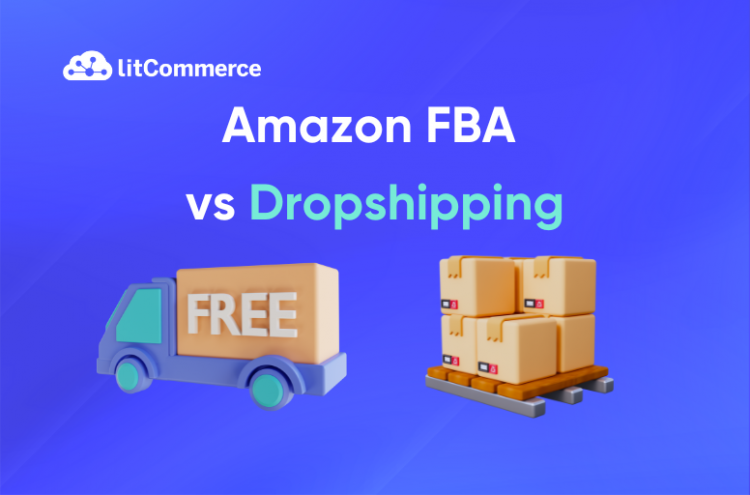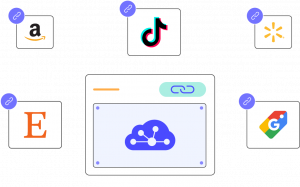Amazon FBA vs dropshipping are two popular business fulfillment methods. They share similarities but also have some distinct differences. Each has a set of pros and cons, making them ideal for different seller goals and budgets.
But which fulfillment method is best for your Amazon business? This article will be your one-stop handbook, diving deep into every corner of Amazon FBA vs dropshipping to help you choose the suitable model for your business. It will cover:
- Amazon FBA vs Dropshipping – Overview
- Choose Amazon FBA or Dropshipping? Consider their pros & cons
- Difference between dropshipping and Amazon FBA
- Amazon FBA vs dropshipping: Which is right for me?
Keep reading to select the right method to start your selling journey!
Already Have An Online Store and Ready to Expand to Amazon?
Streamline your multichannel management and get a head start on Amazon with LitCommerce’s powerful selling tool. Enjoy bulk listing and real-time sync features.
Amazon FBA vs Dropshipping – Overview
What is Amazon FBA?
Amazon FBA, or Fulfillment by Amazon, is a program where sellers store their products in the Amazon fulfillment center. When someone orders, Amazon handles shipping, packing, and customer service. It’s a very popular choice, with 89% of sellers using it. Whether selling branded products, reselling items, or doing wholesale, FBA is a great way to manage your Amazon business.
To illustrate, here is how Amazon FBA works step-by-step for you as a seller:
- You select the products you want to sell.
- After procuring inventory, you prepare it according to Amazon’s strict packaging and labeling guidelines. This includes proper barcodes, protective packaging, and labeling for easy scanning.
- You send your prepared inventory to Amazon’s designated fulfillment centers.
- Once your inventory reaches the fulfillment center, you create detailed product listings.
- When a customer places an order, Amazon’s system automatically processes it. Their employees pick, pack, and ship the item directly to the buyer, ensuring fast and efficient delivery. This hands-off fulfillment process frees up your time for other business priorities.
- Amazon handles all aspects of customer service, including inquiries, returns, and refunds. If a buyer has questions or needs to return a product, Amazon manages the process, providing convenience for both the seller and the customer.
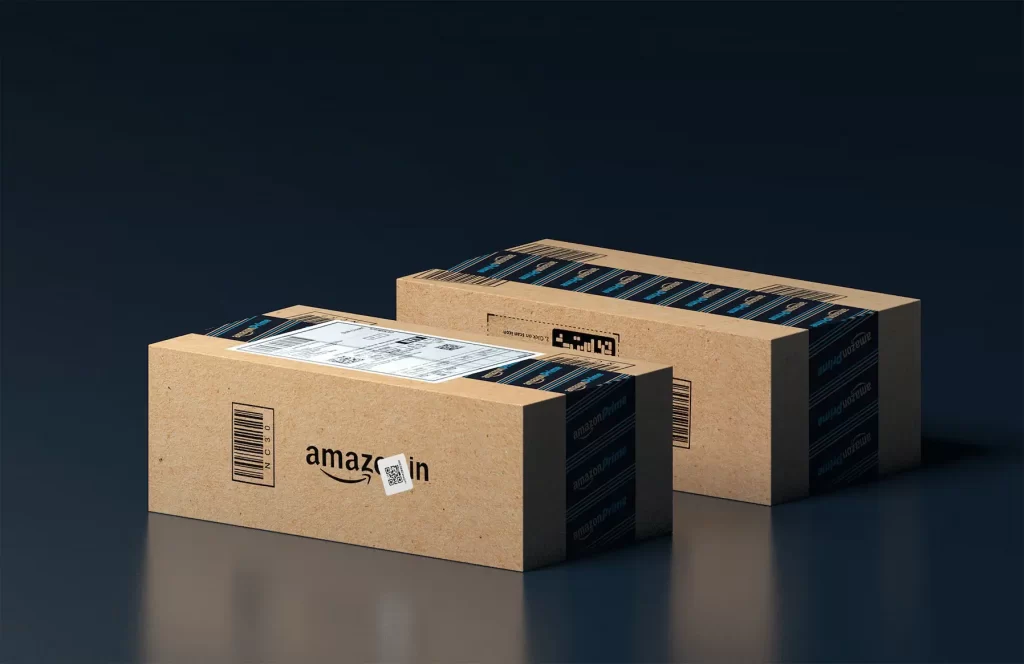
What is dropshipping?
Dropshipping on Amazon is similar to Amazon FBA in that you don’t need to store inventory. Instead of storing products in Amazon’s warehouses, when a customer buys something, you purchase it from a supplier, who then ships it directly to the buyer.
Dropshipping is popular on platforms like Amazon, eBay, and Shopify because it’s easy to start. However, there are strict rules that Amazon sellers must follow if doing dropshipping on this marketplace. For example, sellers must get a letter of authorization when selling branded products.
Here’s a step-by-step overview of how Amazon dropshipping works:
- You select a specific niche and decide which products to sell.
- Then, you create an online store on Amazon. Add products to your store with appealing descriptions, high-quality images, and competitive pricing.
- When a customer purchases a product from your online store, you receive payment upfront. The order details, including the customer’s information, are recorded in your system.
- You pass the customer’s order and shipping information to your supplier, then pay the supplier the wholesale price for the product, keeping the difference as your profit.
- The supplier packages and ships the product directly to the customer on your behalf. Many suppliers offer white-label shipping, so your customers won’t know the order is fulfilled by a third party.
- While the supplier handles fulfillment, you remain the point of contact for your customers. Address inquiries, resolve issues, and ensure a smooth customer experience.
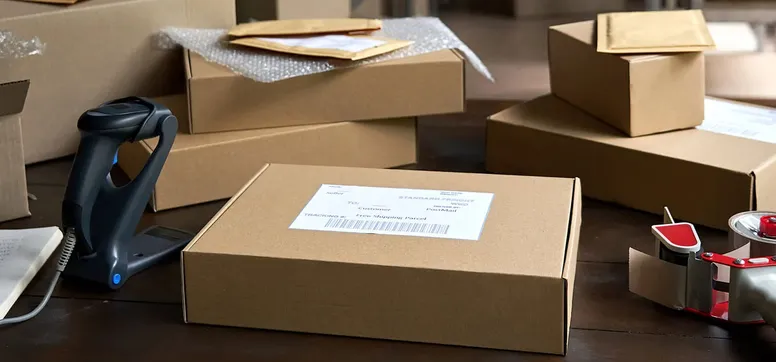
Choose Amazon FBA or Dropshipping? Consider Their Pros & Cons
Both Amazon FBA vs dropshipping are popular fulfillment models for e-sellers. You can choose to use either one or both to start your business. However, before making any decisions, let’s explore the pros and cons of each option.
Pros and cons of Amazon FBA
Amazon FBA can be a great way to sell online, but there are other options. While it has a lot of benefits, there are also some downsides to consider before you jump in. Let’s break down both pros and cons to see if FBA is the right fit for you.
Pros of Amazon FBA
- Convenience: Sellers send their products to Amazon’s warehouses, and Amazon takes care of picking, packing, shipping, refunds, and returns.
- Faster and reliable shipping: Customers benefit from Amazon’s vast fulfillment network, with Prime two-day shipping as a major perk. This can significantly boost customer satisfaction.
- Trust and credibility: Selling through Amazon FBA builds customer trust and credibility because of Amazon’s reliable shipping and return policies, which can lead to increased sales.
- No customer support needed: Handling customer inquiries can be time-consuming. With FBA, Amazon’s customer service manages buyer questions around the clock and has no extra fees for using this service.
- Increased sales and exposure: Products fulfilled through FBA automatically qualify for Amazon Prime, attracting a customer base that tends to spend more. Additionally, FBA products show up higher in search results and increase the chances of winning the Buy Box, which is key to getting more sales on the platform.
Read more: Is Amazon FBA worth it?
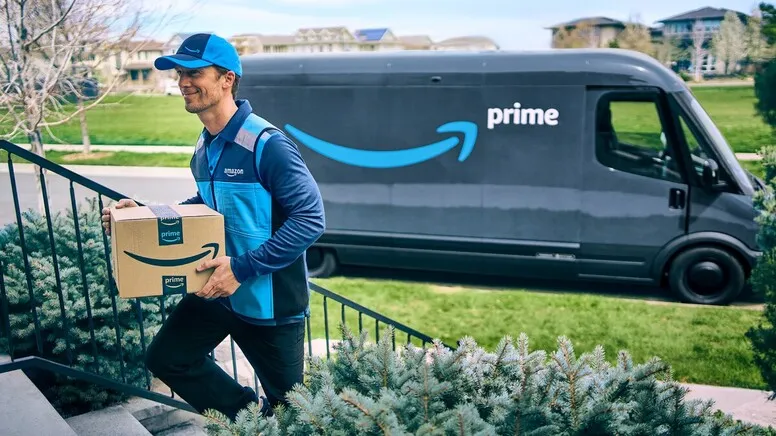
Cons of Amazon FBA
- FBA fees: There are several fees linked to FBA, such as storage, fulfillment, and pick & pack costs. These fees can reduce your profits, especially for cheaper items.
- High competition: Since Amazon is one of the most popular global selling platforms, you’ll encounter other businesses selling similar products, often at lower prices. Be prepared to work a little harder to compete with experienced sellers.
- Limited customer connection: Amazon handles most customer interactions, and you aren’t allowed to collect customer email addresses. So, it makes it harder to build brand loyalty through things like email marketing or special offers.
- Sales limited to one platform: Unlike other models, such as dropshipping, you can only sell products exclusively on Amazon’s online platform. Any changes in Amazon’s selling policies or account termination could significantly impact your eCommerce operations.
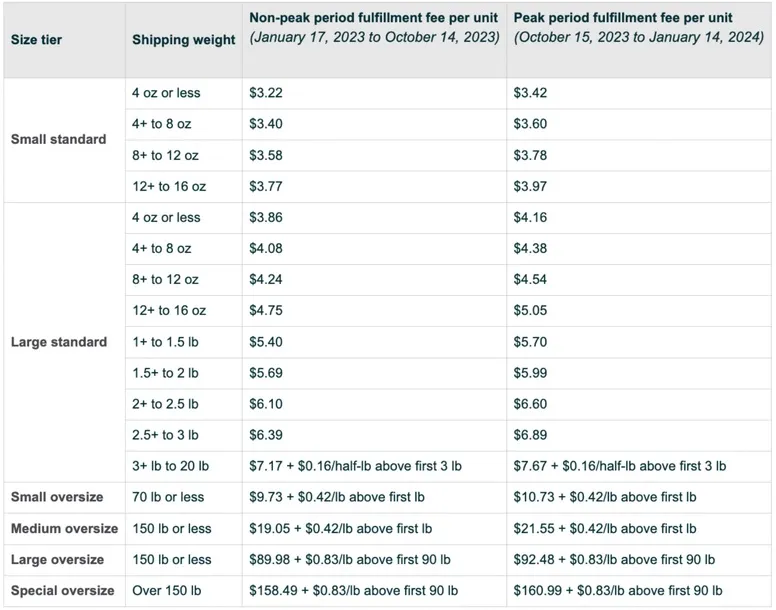
Pros and cons of dropshipping
Dropshipping is popular with new businesses because it’s affordable to start. But before you dive in, let’s look at the pros and cons of dropshipping to see if it’s the right fit for you.
Pros of dropshipping
- Low startup costs: The biggest advantage in comparison between dropshipping vs Amazon FBA is the low cost. You don’t need to spend thousands of dollars to buy inventory upfront, so there’s minimal financial risk.
- Starting with ease: Getting started is easier, as you can quickly find products from a supplier and list them on Amazon for sale.
- Less responsibility: This method frees you up from storing and shipping products yourself. So you can spend more time on branding, marketing, and growing your sales.
- Flexibility: Dropshipping lets you run your store from anywhere, that’s great! But, be careful who you partner with. Pick a reliable supplier you can easily contact. If they mess up deliveries, your customers won’t be happy and your business could be damaged.
- Scalability: Dropshipping lets you effortlessly add new products to your store or remove underperformers because you don’t hold any inventory yourself.
- Wide product range: You can provide a wide range of products without concerns about manufacturing, storage space, or inventory management.
- Multichannel flexibility: Dropshipping allows you to list and sell your products on various online marketplaces like eBay, Walmart, Shopify, and others, in addition to Amazon.
Start Multichannel Dropshipping to Maximize Your Benefits!
Using a multichannel selling tool allows you to manage your dropshipping business more effectively across platforms, reaching more customers and increasing sales.

Cons of dropshipping
- High competition: Because dropshipping is easier to start, there is also much more competition in the market.
- Lower profit margins: Since you’re not buying in bulk, you typically have less negotiation power with suppliers, leading to lower profit margins. High competition also means you should offer competitive prices, which further reduces profits.
- Potential slow delivery: With drop shipping, slow delivery times can be a concern because it depends on who you partner with. If your supplier is overseas, especially in Asia, but you sell for the US market, shipping times can be longer than domestic suppliers.
- Lack of quality control: Your products will be shipped directly from the supplier, so you’ll have limited control over product quality, shipping times, or packaging. Problems with any of these can damage your brand reputation. We advise you to order samples from your suppliers before working with them.
- Dependency on the supplier: You depend on your supplier’s information for customer inquiries when doing dropshipping. Also, you’ll need to check with your supplier for detailed product questions, which can take extra time.
Difference Between Dropshipping and Amazon FBA
For a quick overview of the differences between Amazon FBA vs dropshipping, check this comparison table.
Criteria | Amazon FBA | Amazon Dropshipping |
Fulfillment | Amazon handles fulfillment | A third-party supplier handles fulfillment |
Fees | Storage fees, fulfillment fees, and additional fees for long-term storage or returns | No storage fees |
Profit margin | Higher profit margin (10–20%), as sellers do not need to factor in the cost of inventory or shipping | Lower profit margin, as sellers need to factor in the product costs from suppliers and shipping |
Time commitment | Require a smaller time commitment, as sellers do not need to handle inventory or shipping | Require a more significant time commitment, as sellers need to find reliable suppliers, track orders, and handle customer service |
Control & Branding | More branding potential but still limited compared to self-fulfillment | Limited branding opportunities |
Risk | Higher upfront and operational risks but offers scalability and better control over fulfillment, branding, and customer service | Safer for beginners or those with limited capital due to minimal upfront investment and no inventory requirements |
Customer service | Handle customer service and provide 24/7 support via multiple channels | Require the seller to manage customer interactions and coordinate with suppliers for fulfillment and returns |
Another business strategy you can consider besides Amazon FBA or dropshipping is retail arbitrage. To choose the right one, check out our How to Start Amazon Retail Arbitrage guide.
Amazon FBA vs Dropshipping: Which is Right for Me?
Choosing between Amazon FBA vs dropshipping depends on your business goals, budget, and operational preferences. Let’s break it down based on your specific needs:
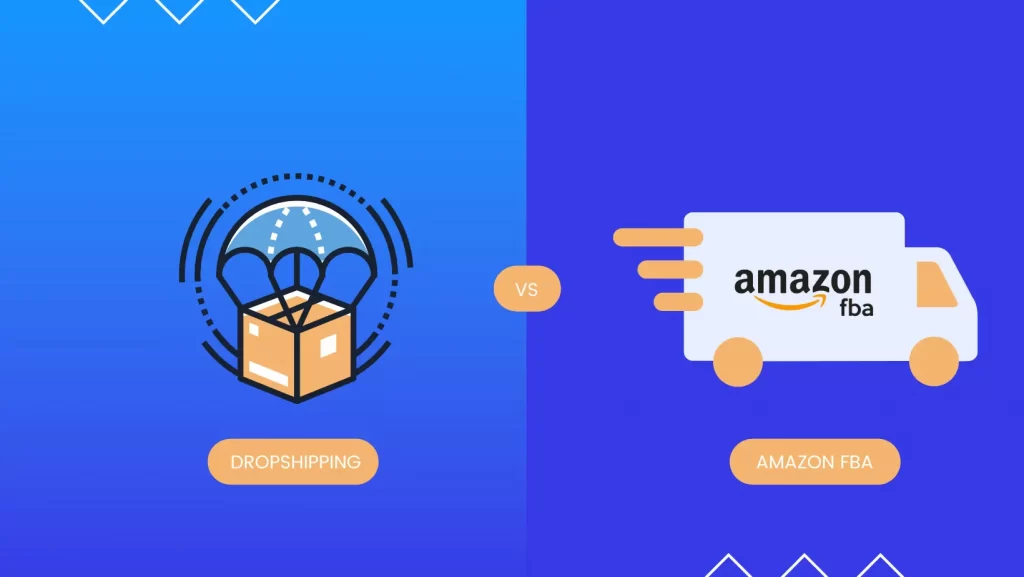
When to choose Amazon FBA?
- If you don’t want to handle the whole fulfillment process
Amazon FBA handles everything from storing your products to packing, shipping, returns, refunds, and customer service. This makes it a hassle-free option for fulfillment compared to dropshipping, where you must coordinate with suppliers to offer the best customer support and ensure timely order fulfillment.
Dropshipping offers convenience by outsourcing inventory and shipping to suppliers. However, you must stay actively involved in coordinating with suppliers to ensure timely deliveries and maintain high-quality customer service
- If you want to build a brand identity
Amazon FBA allows for more control over branding and packaging. You can customize the packaging and include branded materials before sending products to Amazon’s warehouse. Conversely, dropshipping offers limited branding opportunities since the supplier controls the packaging and presentation of the products..
When to choose dropshipping?
- If you don’t want to own an inventory
Dropshipping allows you to sell products without purchasing or storing inventory. Your supplier handles inventory and shipping directly to customers. Conversely, with Amazon FBA, you need to send your products to Amazon’s warehouses, which requires upfront investment in inventory.
- If you don’t have much budget
Dropshipping requires a lower initial investment since you don’t need to buy inventory upfront. You only purchase products after making a sale, reducing financial risk. In contrast, Amazon FBA requires you to invest in inventory and pay for storage and fulfillment fees.
Verdict:
Dropshipping offers a low-barrier entry into the world of Amazon selling, making it an attractive option for beginners. Our detailed comparison guide will guide you on How to Start Dropshipping on Amazon.
Win Big on Amazon with LitComemrce!
Whether you choose Amazon FBA or dropshipping, LitCommerce takes your business to new heights. Our powerful tool helps you manage your listings, sync inventory, and streamline order fulfillment – all in one place.
Amazon Dropshipping vs FBA – FAQ
Yes, dropshipping is allowed on Amazon, but it must comply with Amazon’s dropshipping policy to avoid penalties or account suspension. Yes, dropshipping on Amazon can be profitable. According to Jungle Scout’s State of the Amazon Seller Report, 94% of dropshipping sellers on Amazon report making a profit. Your success depends on the cost of sourcing your products, your selling price, and the profit margin after accounting for Amazon fees. Amazon FBA is generally more profitable long-term due to higher margins, scalability, and control over branding, but it requires significant upfront investment. Dropshipping, on the other hand, has lower startup costs and risks but often results in thinner profit margins due to intense competition and reliance on suppliers. When comparing Amazon FBA vs Dropshipping, one important factor to consider is the overall cost involved in each model. Dropshipping fees can vary depending on the types of products you want to sell and the supplier. There are no Amazon costs or fees specifically for Dropshipping. As an Amazon seller, you can choose between the Individual plan and the Professional plan. The Individual plan costs $0.99 per unit sold, while the Professional plan costs $39.99 per month, no matter how many units sold. Here is a list of Dropshipping products you can consider: The key difference between Amazon FBA and Dropshipping is that with FBA, sellers send inventory to Amazon’s warehouses. In dropshipping, sellers don’t hold any inventory; customers receive products directly from suppliers.
Choosing Dropshipping vs Amazon FBA – It’s Up to You!
When choosing between Amazon FBA vs Dropshipping, there is no one-size-fits-all option. Each has its own advantages and disadvantages, so it’s crucial to consider your business needs, goals, and preferences. To make an informed decision, you should consider budget, product type, control, scalability, and automation factors.
Are you an online seller looking for the latest eCommerce trends, and get advice on how to grow your business? So, let’s check out our eCommerce Blog now. If you need instant support, don’t hesitate to contact us!

